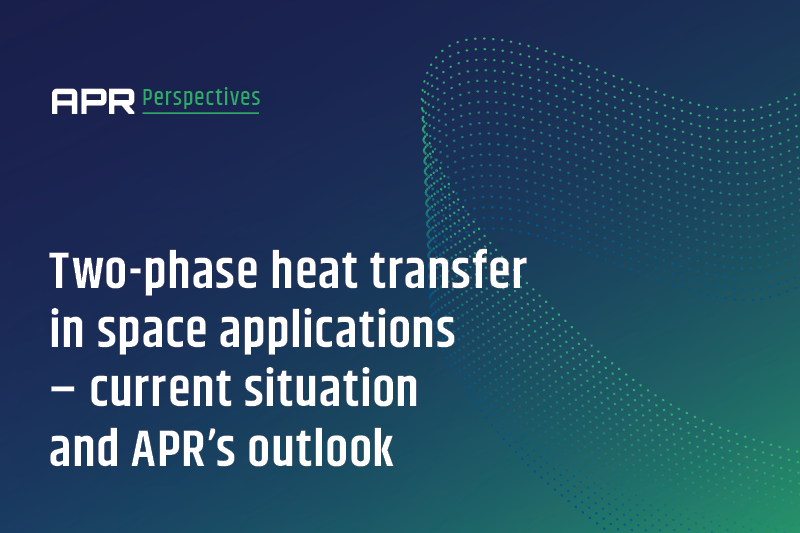Two-phase heat transfer is a class of heat transfer systems that involve a phase change in the heat transfer medium, i.e. vaporization for heat absorption and condensation for heat rejection. This process utilizes the latent heat of vaporization of the medium, allowing for significantly higher heat transfer rates for a given mass flow compared to single-phase systems.
The main benefits of using two-phase heat transfer compared to single phase are, in addition to the aforementioned higher heat transfer rate, uniform temperature over a larger heat load area (due to the system boiling point being constant) and the ability for the system to work with only a small temperature gradient between the hot and cold sides. The main drawback is increased complexity and in more advanced implementations also control challenges and flow instabilities.
The most common two-phase heat transfer device, in both space applications and terrestrial systems, is the heat pipe which is a completely passive device in which capillary action is used to move the liquid from the cold side to the hot side. On the hot side, the liquid evaporates, absorbing heat in the process, and the vapor is then pushed back to the cold side where it condensates back to the liquid phase while releasing the absorbed heat.
Advanced passive and active solutions
More advanced passive solutions, such as loop heat pipes and capillary pumped loops, are used in some space applications where high levels of power needs to be transported over longer distances than what is practical to do with regular heat pipes, and/or where the heat flow needs to be turned on and off. While these systems are passive, also relying on capillary action for the fluid motion, they do require the use of controlled heaters to start, maintain and stop the flow, adding a level of complexity compared to regular heat pipes. Also, the on/off control is dependent on the operating point and start-up/shut-down is not trivial.
For even more demanding applications, active two-phase systems in the form of mechanically pumped two-phase loops, where a pump actively drives the flow, can be used. These are currently mainly used where very large amounts of power need to be transported over a relatively large distance, so that a large volume flow is required, and the pressure drop in the tubing needs to be overcome by a mechanical pump.
EHD pump technology – first proof-of-concept
APR is currently looking into how its EHD technology can be applied to create improved two-phase heat transfer devices for the space segment. A first proof-of-concept has been successfully performed, where an EHD-pumped 2-phase loop was demonstrated in a laboratory environment. The next step is to define and develop a specific solution where the benefits of the EHD technology (no moving parts/vibrations, instant on/off control, small form factor) can be combined with the benefits of 2-phase heat transfer to create a unique offering.
“We firmly believe that using EHD pumps in two-phase systems will result in high performance thermal solutions with unique properties”
Both enhancement of existing systems, where the EHD pump can be used to for instance prevent flow instabilities and simplify the on/off control of capillary pumped systems, and stand-alone EHD-pumped systems such as smaller 2-phase loops for chip cooling or applications where high thermal performance must be combined with low vibrations, are considered.
We firmly believe that using EHD pumps in two-phase systems will result in high performance thermal solutions with unique properties, and that we can find niches where it will enable more powerful systems on spacecraft – such as in-orbit high performance computing, on-board AI and high-performance sensors, among others.
Looking further ahead, we intend to also adapt the solution for terrestrial use. Here we see potential markets in thermal management of high-power density chips, datacenters and telecom applications.
Want to learn more about our groundbreaking two-phase heat transfer solutions? Please contact us with your questions!
Henrik Löfgren
APR Technologies



